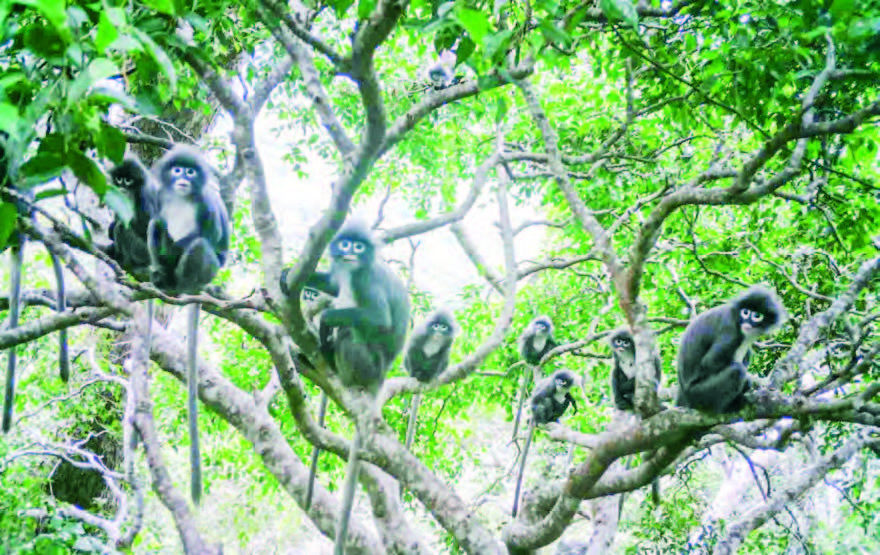POPA langurs reside in the volcanic valley of Mount Popa, the extinct volcano, about 11 miles northeast of Kyaukpadaung Township in NyaungU District, Mandalay Region. Wildlife lovers and nature lovers can observe their nature with the permissions, according to U Tin Ohn Kyaw, warden of the Popa Mountain Wildlife Sanctuary.
Officials encouraged the locals to participate in conserving the inhabitants of langur, reforestation, banning hunting and natural resources conservation in order to prevent them from extinction.
Monkeys only found in volcanic valleys are called dusky leaf monkeys, also known as Cantor’s Langur, were listed as endangered on the International Union for Conservation of Nature’s (IUCN) Red List in 2016, and a new species on 11 November 2020 called Popa Langur. They also reside in Nwalaboh Hill, Hmanpya Hill and Saymon Hill in addition to the volcanic valley. According to the data collected in 2019- 2023, there are about 116 Popa langurs and about 150 in 2024.
Locals call Popa Langur only found in Myanmar as ‘Myauk Zeekwet’ (capuchin monkey, and dusky leaf monkey). They do not eat the crops from the fields of residents, and they eat only tender leaves in the jungle. They do not live near human beings but on the steep hillsides. In the morning, they bask with their family or in groups, according to the camera traps.
The existence of Mount Popa in the central part of Myanmar brings benefits regarding weather to the vicinity areas. There is proper forestation, watershed system and natural springs. Therefore, all should conserve the natural land areas without felling the trees and slash-and-burn. — Dipa Linn/ KTZH


